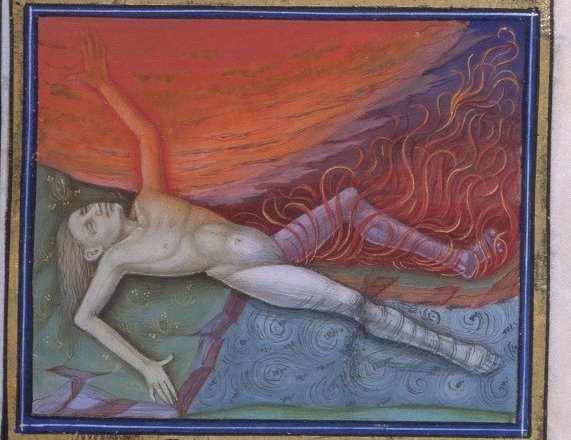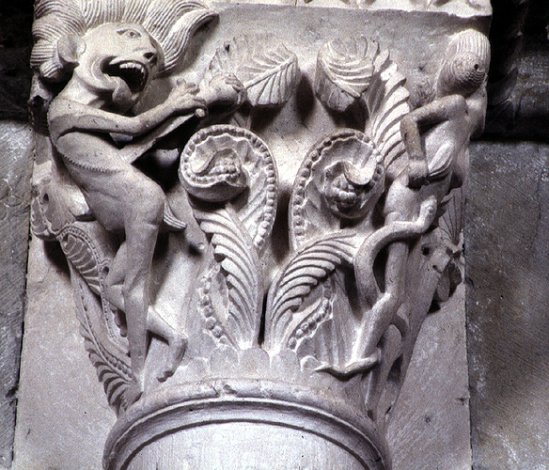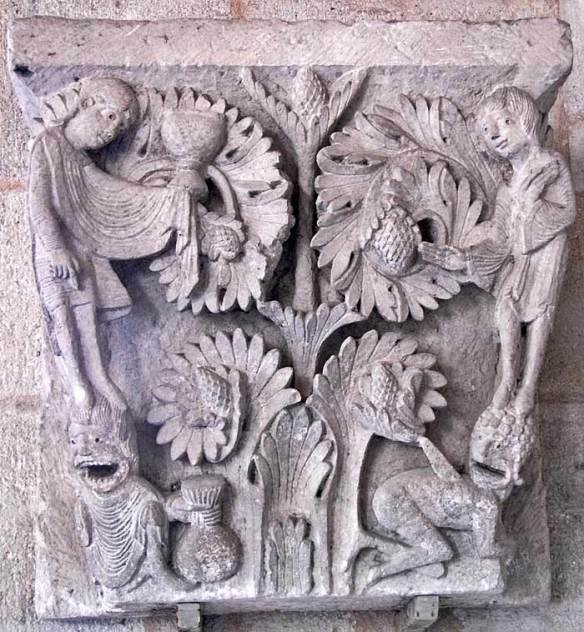Anger stands out among emotions as it has a strong physical connection to our bodies.
While love can make our hearts flutter and sorrow brings tears, anger is distinctly felt in our muscles, veins, eyes, lips, and hair.
The expression of anger has significant cultural importance, especially in the Middle Ages, where it was assessed and appreciated through the physical features of the human body.
In the Early Middle Ages, scholars like Pope Gregory the Great distinguished between two forms of anger: self-destructive and righteous.
Self-destructive anger, seen as a vice, was marked by excitability, lack of control, and irrationality.
Gregory emphasized its detrimental impact on wisdom and life. Conversely, righteous anger, exhibited by God, clerics, and kings, was considered a virtue used to combat sin.
Medieval thinkers, including Gregory, drew heavily from ancient Greek and Roman philosophy.
Influential figures like Seneca, a Roman Stoic philosopher, and Galen, a physician-philosopher, significantly shaped medieval conceptions of anger.
Seneca’s work “On Anger” highlighted anger as a perilous emotion, akin to madness. Galen similarly viewed anger as a loss of natural reasoning faculties.
These perspectives influenced medieval attitudes toward anger, emphasizing the importance of reason over uncontrolled emotion.
The consensus among Seneca, Galen, and Gregory is that anger stands out from other emotions due to its visible physical expression.
Seneca emphasizes that anger is openly displayed, becoming more evident as it intensifies.
Galen describes angry outbursts involving physical actions like striking, kicking, and shouting at various objects.
Gregory details the bodily manifestations of anger, including a quickened heart, trembling body, stammering tongue, fiery expression, and fierce eyes.

In medieval times, believing in the four humors influenced how anger was perceived (Figure 1).
According to this theory, people’s temperament was linked to bodily fluids like black bile, red or yellow bile, blood, and phlegm.
The dominance of a particular fluid shaped both character and physical appearance. Those with red hair or a ruddy complexion were considered prone to anger due to an excess of yellow bile, making them choleric. This excess heat and dryness supposedly made their blood active and restless.
The idea was that individuals quick to anger literally overheated, and their angry disposition was thought to be evident in their physical traits, like red hair, even before they displayed agitation.
Fury Through the Ages: Unraveling the Tapestry of Anger in Medieval Culture
In medieval times, scholars believed that specific gestures reflected a person’s soul. Hugh of Saint Victor, a twelfth-century theologian, wrote a guide for young monks stating that ‘turbulent’ or agitated gestures indicated a person afflicted by vice.
Scholars, including Hugh, considered these gestures to manifest one’s fundamental character, not just a momentary emotional state.

Medieval artists visually represented the concept of anger in response to literary works like Prudentius’s Psychomachia.
Furthermore, in this poem, Anger is vividly described as showing teeth, foaming at the mouth, and ultimately resorting to self-harm with a sword after failing to overcome Patience.
A twelfth-century sculpture at the church of Saint Madeleine in Vézelay, France, influenced by the same poem, portrays Anger with wild, fiery hair, sharp teeth, a visible tongue, wide-open staring eyes, and a tail (Figure 2).
The sculpture depicts Anger’s body in a contorted and twisted manner, reflecting the struggle to contain the intense rage. The representation culminates in a dramatic act of self-destructive anger: suicide.

In the twelfth-century, a sculpted capital at Saint Lazarus Church in Autun, France, vividly portrays the embodiment of anger (Figure 3).
Moreover, this artwork features a twisted and screaming figure, symbolizing self-destructive anger, hunched over and impaled on a sword at the bottom right.
Above, the virtuous figure of Patience stands angelically. On the left side of the capital, another monstrous representation depicts the vice of Avarice, crouched down and clutching a money purse.
In a symbolic gesture, the virtue of Charity triumphs over Avarice by trampling on it.
In the Middle Ages, depictions of anger evolved from monstrous and distorted imagery in the twelfth century to more social and naturalistic representations in the thirteenth century.
An example is a relief on Notre-Dame Cathedral, Paris, portraying anger as a conflict between a woman and a monk.
The woman, with flame-like hair and a sword, now embodies outward-directed anger, symbolizing societal conflicts and the clash between virtue and vice.
Positioned at the cathedral entrance, the sculpture is a timeless reminder to control one’s emotions.
Medieval artists and thinkers creatively visualized the universal experience of anger, capturing its essence with fiery and self-destructive imagery. These historical depictions continue to resonate, emphasizing the enduring nature of human emotions.


